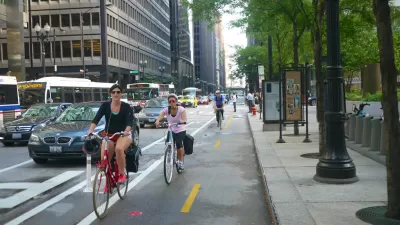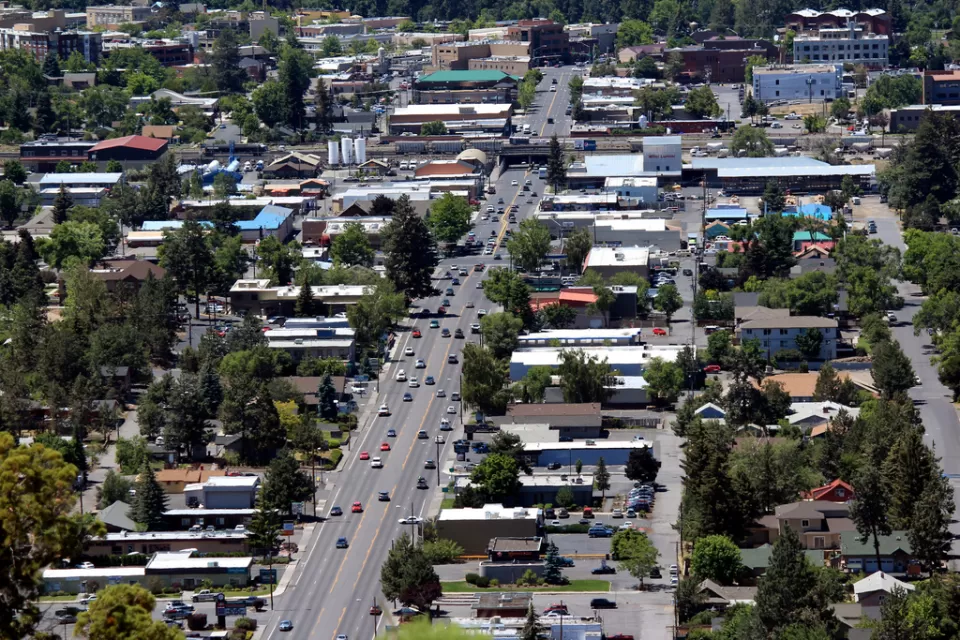Initial attempts at making city streets more encouraging to cyclists have often been marred by poor design.

Bicycle lanes are good for both our health and our carbon footprints. “Ten bikes can park in the space of one car,” Jeff Speck points out in his book Walkable City, “and the typical bike lane handles five to ten times the traffic volume of a car lane that is double the bike lane’s width.” For these and other reasons, bike lanes are an essential element of design for many streets today.
But like Complete Streets, bicycle lanes are in a transitional phase in which weak, monofunctional designs are frequently touted as best practices.
In 2008 the New York City Department of Transportation introduced, on First Avenue in Manhattan, a multimodal Complete Street that is first and foremost a suburban-style arterial for suburbanites to drive in and out of the city. The design divides the public realm into pieces, most of which are given to the car.”
FULL STORY: The place for bike lanes

Maui's Vacation Rental Debate Turns Ugly
Verbal attacks, misinformation campaigns and fistfights plague a high-stakes debate to convert thousands of vacation rentals into long-term housing.

Planetizen Federal Action Tracker
A weekly monitor of how Trump’s orders and actions are impacting planners and planning in America.

Chicago’s Ghost Rails
Just beneath the surface of the modern city lie the remnants of its expansive early 20th-century streetcar system.

Bend, Oregon Zoning Reforms Prioritize Small-Scale Housing
The city altered its zoning code to allow multi-family housing and eliminated parking mandates citywide.

Amtrak Cutting Jobs, Funding to High-Speed Rail
The agency plans to cut 10 percent of its workforce and has confirmed it will not fund new high-speed rail projects.

LA Denies Basic Services to Unhoused Residents
The city has repeatedly failed to respond to requests for trash pickup at encampment sites, and eliminated a program that provided mobile showers and toilets.
Urban Design for Planners 1: Software Tools
This six-course series explores essential urban design concepts using open source software and equips planners with the tools they need to participate fully in the urban design process.
Planning for Universal Design
Learn the tools for implementing Universal Design in planning regulations.
planning NEXT
Appalachian Highlands Housing Partners
Mpact (founded as Rail~Volution)
City of Camden Redevelopment Agency
City of Astoria
City of Portland
City of Laramie


























